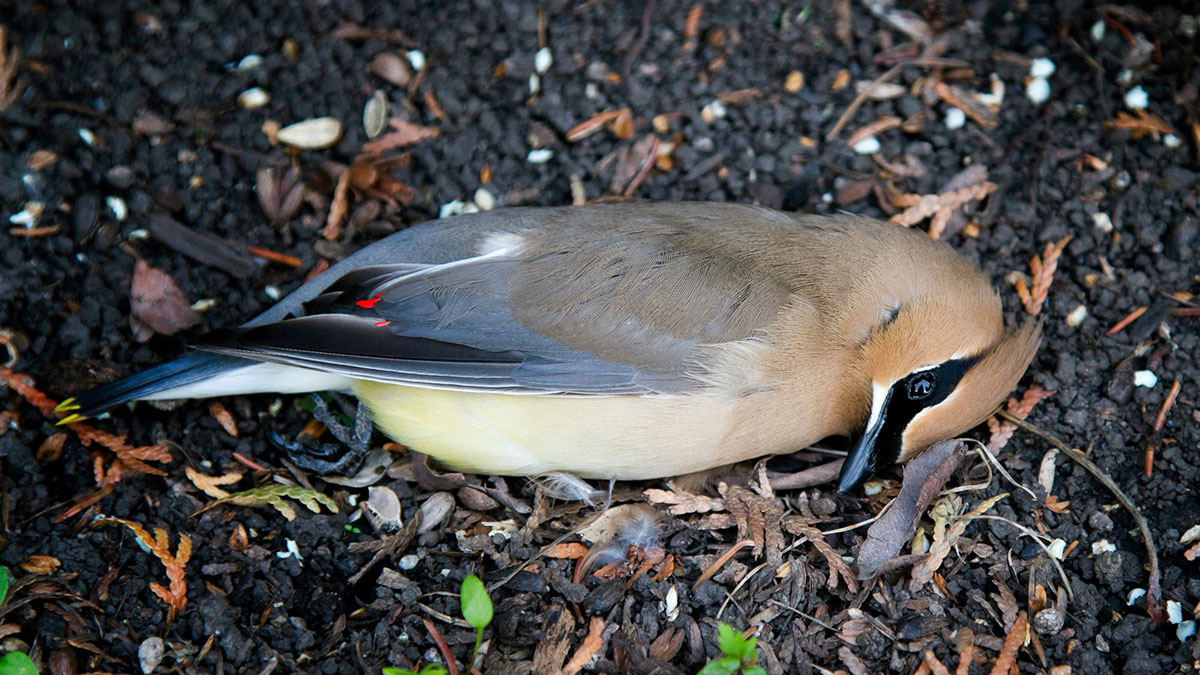 Supplied – D. Kendall
Supplied – D. KendallThose living in older, treed neighbourhoods are bound to have a variety of backyard visitors. Sometimes they’re cute, but they’re also the source of that occasional “thud” coming from the window.
This problem is the focus of the Birds and Windows project, an ongoing study from the Department of Biological Sciences. Unlucky birds crash into windows all the time — it’s the second biggest human-caused killer of birds in Canada after cats. The project’s goals are to find the number of affected birds and how this number can be reduced.
Birds and Windows obtains its data from field experiments and surveys. Studies have shown that 90 per cent of collisions happen in residential windows, meaning help from residents was needed. Graduate student Justine Kummer, whose master’s thesis is on Birds and Windows, enlisted the help of homeowners from people around the world as well as in Edmonton.
Kummer said the project is made possible through citizen science.
“I’ve learned a lot about working with people,” she said. “My project’s relied entirely on it.”
Birds and Windows was initially launched online as a survey, open to anyone around the world. It asks residents to check the perimeter of their house and report any bird fatalities. It also asks for information about the participant’s residence and any bird attractants around it, such as feeders.
Citizen science has allowed for Kummer to gather lots of data, but it still comes with challenges, she said. It’s difficult to determine whether protocol is being followed by all participants. To keep data consistent, daily reporting of bird deaths — or lack thereof — was ideal. Kummer said she had to hope and trust participants.
Some local survey participants later became part of more involved experiments. The most recent one studied how bird feeders influence collisions. Kummer set up feeders with the help of 43 homeowners at different distances from windows, to find how distance from windows impacts the number of bird fatalities.
She found that placing feeders further away from windows resulted in more collisions. In other words, the closer the feeder to the window, the better.
Feeders increase bird traffic around houses, but Kummer found that this isn’t a big factor in collisions. The survey is still going, so researchers can’t yet say how building types and bird attractants affect mortality.
Kummer started researching birds in a Biological Sciences lab as a volunteer after completing her Bachelor of Science. She was then employed in the lab, and started her master’s.
“I didn’t know it when I was an undergrad, but there are so many opportunities for people to volunteer in labs,” Kummer said. “It’s a great way to get experience and see if you like (research) and a good way to make connections.”
She now supervises her own volunteers.
Kummer is in her last semester and finishing with her thesis, but the project is ongoing.
For Kummer, her favourite bird to see around Edmonton is the chickadee, which seem to be more resilient against residential windows.
“A lot of the little guys will just hit a window and bounce off and fly away,” she said. “It just makes me laugh.”
People can still become a part of the survey at birdswindows.biology.ualberta.ca.




